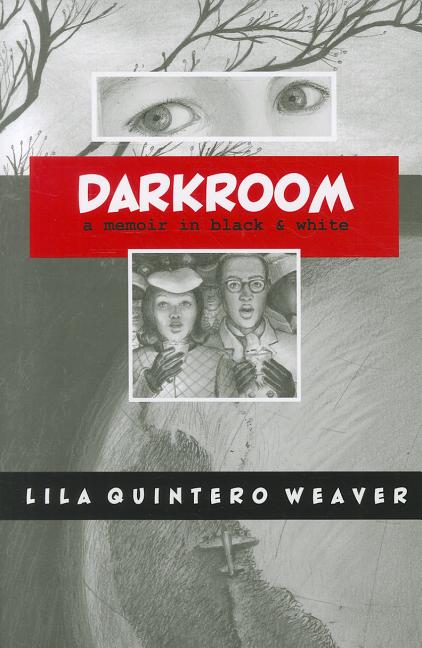Book Descriptions
for Darkroom by Lila Quintero Weaver
From Cooperative Children's Book Center (CCBC)
Lila Quintero Weaver spent much of her childhood in Marion, Alabama. It was the 1960s, when the huge dividing line between black and white was being tensely challenged. Her family were Argentine immigrants, her mother of European descent, her father part Native Indian. Her father was a passionate photographer standing on the edge of history. He knew the significance of what was happening around them and was determined to record what he saw on film. Young Lila knew her family didn’t fit on either side of that racial line, but it took time for her to comprehend the hugeness of what was happening. Understanding came through experiences both poignant (“My first black classmate was Rosetta. She looked terrified”) and deeply unsettling (“ … he got exactly what he deserved”—a comment she overheard as two white teachers discussed the death of African American Jimmie Lee Jackson, shot by a state trooper while trying to find a safe place for his mother and grandfather after a peaceful protest was disrupted by whites and turned violent). Weaver’s adult understanding informs this look back, but in a way that is enlightening rather than intrusive as the significance of events from her childhood and young adulthood come into focus. (Age 13 and older)
CCBC Choices 2013. © Cooperative Children's Book Center, Univ. of Wisconsin - Madison, 2013. Used with permission.
From the Publisher
Darkroom: A Memoir in Black and White is an arresting and moving personal story about childhood, race, and identity in the American South, rendered in stunning illustrations by the author, Lila Quintero Weaver. In 1961, when Lila was five, she and her family emigrated from Buenos Aires, Argentina, to Marion, Alabama, in the heart of Alabama’s Black Belt. As educated, middle-class Latino immigrants in a region that was defined by segregation, the Quinteros occupied a privileged vantage from which to view the racially charged culture they inhabited. Weaver and her family were firsthand witnesses to key moments in the civil rights movement. But Darkroom is her personal story as well: chronicling what it was like being a Latina girl in the Jim Crow South, struggling to understand both a foreign country and the horrors of our nation’s race relations. Weaver, who was neither black nor white, observed very early on the inequalities in the American culture, with its blonde and blue-eyed feminine ideal. Throughout her life, Lila has struggled to find her place in this society and fought against the discrimination around her.
Publisher description retrieved from Google Books.


